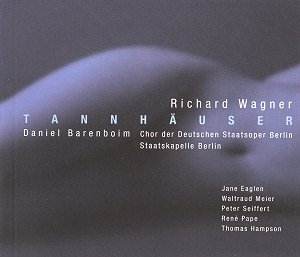 Composer: Christoph Ernst Friedrich Weyse
Composer: Christoph Ernst Friedrich Weyse
Works: Christmas Cantata No. 3 (B. S. Ingemann), Easter Cantata No. 1 (Thomas Thaarup)
Performers: Bodil Arnesen (soprano), Dorthe Elsebet Larsen (soprano), Kirsten Dolberg (alto), Peter Grønlund (tenor), Stephen Milling (bass), Tivoli Concert Choir, Tivoli Symphony Orchestra/Michael Schönwandt
Recording: The Tivoli Concert Hall, Copenhagen, Denmark, 1997
Label: MARCO POLO 8.224049 [51.42]
Christoph Weyse, a significant yet often overlooked figure in early 19th-century Danish music, emerges as a compelling voice through these vibrant cantatas. Composed within the rich cultural milieu of Copenhagen, both the Christmas Cantata No. 3 and the Easter Cantata No. 1 encapsulate the essence of Weyse’s style—marked by lyrical beauty, structural clarity, and an infectious sense of joy. The influence of earlier composers, particularly J.S. Bach, is palpable, though Weyse’s work is distinctly informed by the romantic sensibilities of his time.
The Christmas Cantata No. 3 opens with the exuberant chorus “Jubler, o jubler i salige toner,” which sets a festive tone in E-flat major, characterized by broad, sweeping chords that echo the celebratory text. The meticulous orchestration, including prominent brass and strings, creates a buoyant atmosphere, inviting listeners to partake in the festive rejoicing. The subsequent trio presents a beautifully intimate moment, highlighted by Hans Nygård’s expressive cello solo, which serves as a poignant contrast to the larger choral forces. Each musical number flows seamlessly, and the variation in texture throughout the work exemplifies Weyse’s adeptness at ensemble writing.
The Easter Cantata No. 1, on the other hand, captures the dramatic tension of the Resurrection narrative. The opening chorus “Hil dig, hil dig, livets morgenrøde” bursts forth with an exhilarating energy, establishing a C major tonality that reflects the triumph of the occasion. The fugal passages here are particularly striking, showcasing Weyse’s mastery of counterpoint. The drama intensifies in the tenor recitative, where the mockery of Jesus’ enemies is starkly juxtaposed with the quintet that evokes the sorrow of mourning. This tonal turbulence culminates in the exuberant conclusion, uniting all forces in a jubilant finale, reminiscent of the earlier chorus yet imbued with newfound vitality and resolution.
The performers, under the direction of Michael Schönwandt, deliver a commendable interpretation of these works. The Tivoli Concert Choir exhibits a rich, blended sound that enhances the festive character of the cantatas. Each soloist brings a distinct interpretative insight, particularly Bodil Arnesen and Stephen Milling, whose vocal nuances provide emotional depth to their respective parts. Notably, the balance between the choir and orchestra is well-maintained, though there are moments where the brass can overshadow the more delicate string lines, resulting in a slight ricochet effect that distracts from the overall clarity.
The engineering of this recording deserves mention as well. The acoustics of the Tivoli Concert Hall generally favor the warm, resonant qualities of the ensemble, but the occasional overpowering of the brass sections suggests a need for more nuanced sound mixing. Despite this, the overall production captures the essence of Weyse’s orchestration, allowing the listener to appreciate the intricate interplay between the vocal and instrumental parts.
Reviving these cantatas not only sheds light on Weyse’s contributions to the sacred music repertoire but also serves as a reminder of the rich cultural heritage of Denmark during this period. The thoughtful and celebratory nature of these works, combined with the skilled interpretations by Schönwandt and his ensemble, marks this recording as a significant addition to the catalog of early Romantic choral music. The listener is left with a thorough appreciation of Weyse’s ability to weave together emotional expressiveness and structural sophistication, affirming his rightful place in the pantheon of classical music.



